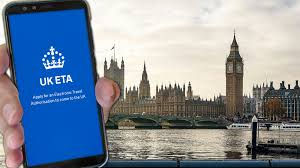Do Americans Need a Visa for Europe? (2025 Made Simple)
- 2 Getaway Travel

- Sep 23
- 4 min read

Written by Randy & Lisa Otts, 2 Getaway Travel
30+ years helping families and couples plan stress-free trips worldwide. We handle IDs, forms, flights, seats, and stays—so you can just go.
Prefer to watch? See our 3-minute breakdown on YouTube
Hey travelers—Randy & Lisa here. We hear this every week: “Do I need a visa for Europe?” Short answer: you don’t need a traditional visa for short tourist trips, but there are a few rules that can stop you at security or at the border if you miss them. Here’s the plain-English version so your trip stays easy.
Short answer: For tourism/business, Americans don’t need a traditional visa to visit most of Europe’s Schengen Area for up to 90 days in any 180-day period with a valid U.S. passport. Make sure your passport meets Europe’s validity rules (generally 3 months beyond departure, though the U.S. State Dept suggests keeping 6 months to be safe). The UK is outside Schengen—if you enter the UK, you’ll need the UK’s Electronic Travel Authorisation or ETA (see below); pure connections typically don’t require an ETA.
Passports & REAL ID (What Actually Gets You on the Plane)
Your passport gets you to Europe; REAL ID only matters if you’re using a driver’s license for U.S. domestic TSA. For Europe, travel on your passport—and check validity (aim for 6 months; Europe’s formal rule is 3 months beyond your planned departure from the Schengen Area).

UK Connections: When You Do—and Don’t—Need the ETA
The UK and Ireland aren’t in Schengen—their entry rules are separate. Not every London connection needs the UK ETA. If you stay inside the international transfer area and never pass through border control, you may not need it. If you enter the UK for any reason—an overnight, a terminal change that requires immigration, or a quick city visit—you’ll want the ETA approved before you fly. The form is inexpensive but picky the first time. We file it for clients so there are no hiccups.
Europe’s updates: two different systems.
You’ll start to see automated border kiosks and quick biometric checks when you arrive in the Schengen Area. That’s Europe’s new Entry/Exit System—it happens at the border. Later, the EU will switch on ETIAS, a short online authorization you complete before your trip. They’re different steps. We’ll watch your dates and let you know which one applies, then walk you through it.

Bags & Personal Tech: Avoid the Counter Surprises
Airlines are checking carry-on sizes again. Aim for 22 × 14 × 9 inches (wheels and handles count). Some fares include checked bags and some don’t, even with brands that used to be more relaxed. When we book for you, we confirm exactly what your ticket includes so there are no surprises at the counter.
Power banks live in your carry-on.
Those little phone chargers can’t go in checked luggage. Keep them with you. If your battery label looks like alphabet soup, send us a photo and we’ll tell you if it’s okay.
When a connection requires UK border control, we handle the ETA and reroute options so you keep moving—no gate drama.
Here’s our promise: As our client, we’ll check your IDs, handle any UK/Europe forms, book the fare that matches how you actually travel, and sanity-check your tech bag so nothing gets flagged. You focus on the fun part—like which cobblestone street café you’re trying first.
Ready to Plan Your Trip?
Reach out and we’ll confirm exactly what you need and take care of the forms and fine print. Text us at 832-224-3229 or start a 60-second trip form—we’ll take it from there.
Visual learner?
Here’s the quick video guide:
—Randy & Lisa, 2 Getaway Travel
Quick FAQs
How long can I stay in Europe without a visa?
Up to 90 days in any 180-day period across the Schengen countries. Longer stays (study/work) require the right national visa.
What passport validity do I need?
EU rule: at least 3 months beyond your planned departure and issued within the last 10 years. The U.S. State Department recommends 6 months to avoid issues.
What is “Schengen”?
The Schengen Area is a group of European countries that removed internal border checks so people can move between them like one big travel zone. For U.S. tourists, it generally means visa-free stays up to 90 days in any 180-day periodacross those countries with a valid passport. Most EU nations are in Schengen, plus a few non-EU (like Iceland, Norway, Switzerland, Liechtenstein). The UK and Ireland are not in Schengen and have their own entry rules.
Is ETIAS required now?
No—ETIAS (the EU’s pre-trip authorization) is slated for late 2026. It’s separate from the UK ETA.
Do I need a REAL ID to fly to Europe?
No—your passport is what gets you there. REAL ID only matters if you want to use a driver’s license for U.S. domestic TSA.
Do Americans need a visa for Europe in 2025?
For short tourist stays in the Schengen Area, generally no traditional visa. You’ll see border kiosks (EES) at arrival; a separate online pre-authorization (ETIAS) comes later. We’ll tell you what applies to your dates.
Do I need a UK ETA for a London layover?
If you stay airside and don’t pass UK border control, usually no. If you enter the UK (overnight, airport change, city visit), you’ll need an ETA—we’ll file it for you.
What size carry-on actually fits?
Aim for 22 × 14 × 9 inches. If your bag is “close,” assume it won’t pass the sizer. Tell us your bag model and airline and we’ll sanity-check it.






